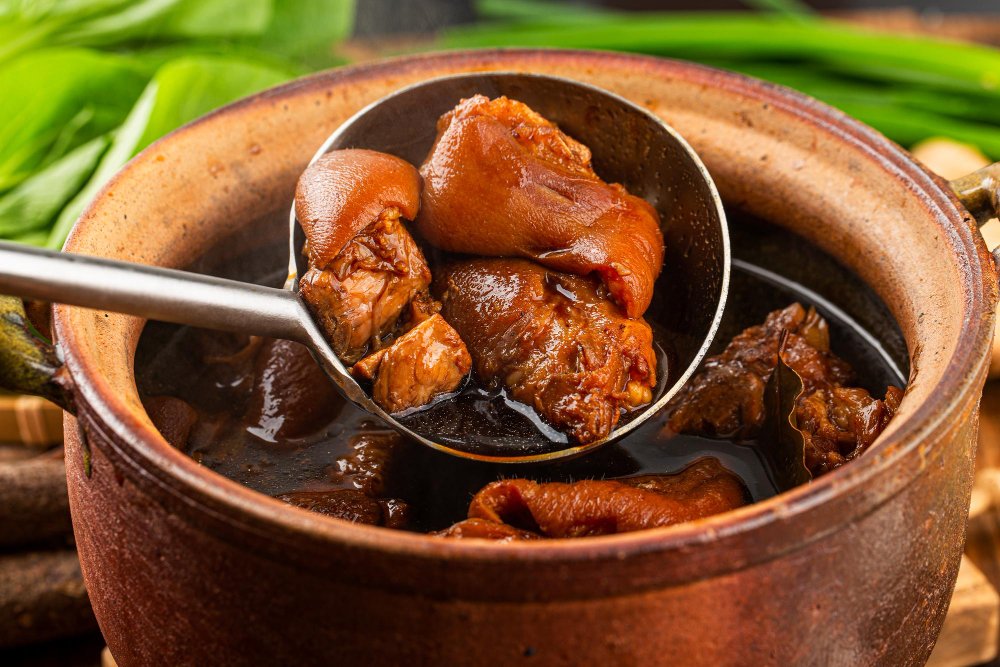
Introduction
Filipino food, known for its bold flavors and rich culinary traditions, reflects the diverse history and cultural heritage of the Philippines. This cuisine is a delicious amalgamation of indigenous flavors and influences from Spanish, Chinese, Malay, and American cultures. From hearty stews and savory grilled meats to sweet desserts and innovative fusion dishes, Filipino cuisine has something to offer every palate. This article delves into the essence of Filipino food, exploring its traditional dishes, culinary journey, cultural significance, and the rise of Filipino cuisine on the global stage.
Traditional Filipino Dishes
Overview
Traditional Filipino dishes are the cornerstone of the country’s culinary identity. These dishes often highlight the use of fresh, local ingredients and time-honored cooking techniques. Filipino food is characterized by its vibrant flavors, which are typically a harmonious blend of sweet, sour, and salty tastes.
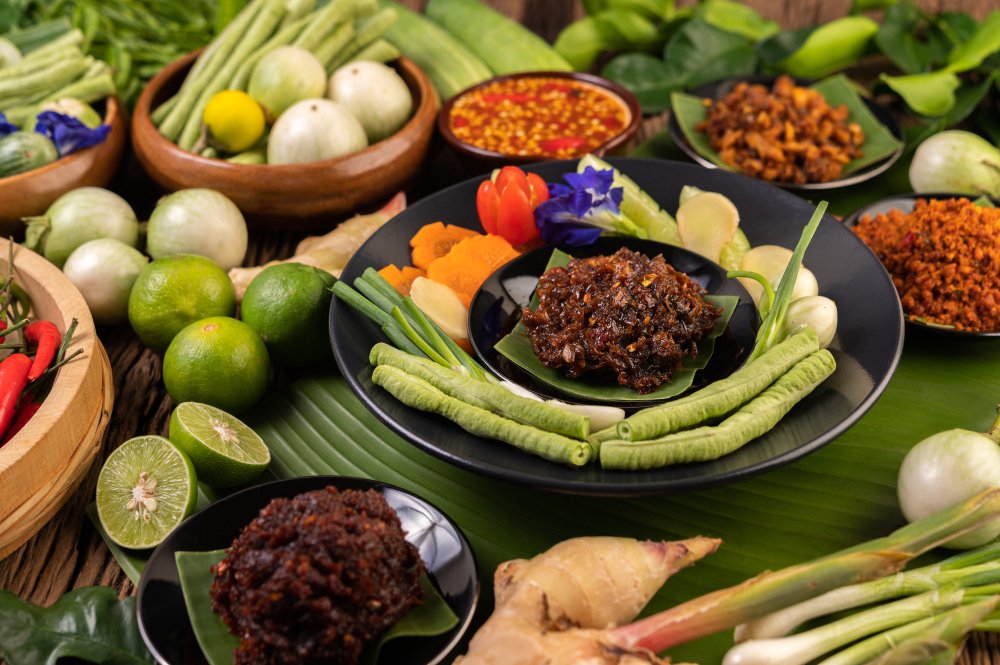
Key Ingredients and Cooking Methods
Filipino cuisine makes extensive use of ingredients such as rice, coconut, fish, pork, chicken, tropical fruits, and a variety of vegetables. Common cooking methods include grilling, frying, stewing, and fermenting. Spices and seasonings like garlic, onions, ginger, soy sauce, vinegar, and fish sauce are frequently used to enhance the flavors of dishes.
Examples of Popular Traditional Filipino Dishes
- Adobo: Often considered the unofficial national dish of the Philippines, Adobo is a savory stew made with chicken or pork, marinated in a mixture of vinegar, soy sauce, garlic, and spices. It is then simmered until tender, creating a flavorful and aromatic dish that is perfect with rice.
- Sinigang: This is a tangy and sour soup made with tamarind broth, featuring pork, shrimp, or fish, along with vegetables such as kangkong (water spinach), radish, and eggplant. The sourness of the tamarind gives Sinigang its distinctive and refreshing flavor.
- Kare-Kare: A rich and hearty stew, Kare-Kare is made with oxtail, tripe, and a thick peanut sauce. It is traditionally served with bagoong (fermented shrimp paste) and a variety of vegetables like eggplant, string beans, and banana blossoms.
- Lechon: A festive dish often served during special occasions, Lechon is a whole roasted pig known for its crispy skin and succulent meat. The pig is typically marinated and stuffed with herbs and spices before being slow-roasted over an open fire.
- Pancit: This term refers to a variety of noodle dishes in Filipino cuisine. Pancit Canton and Pancit Bihon are popular versions, often stir-fried with a mix of meat, seafood, and vegetables. Noodles are a symbol of longevity and are commonly served during birthdays and celebrations.
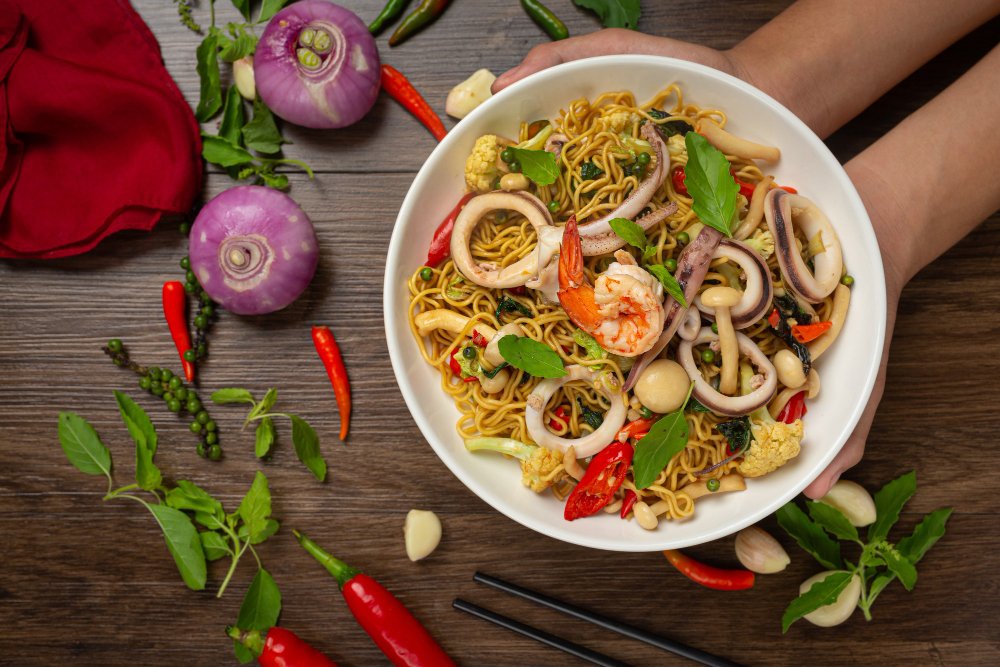
Filipino Cuisine: A Culinary Journey
Evolution of Filipino Cuisine Over Time
The evolution of Filipino cuisine is a testament to the country’s rich history and the various cultures that have influenced its development. Each wave of colonization and trade brought new ingredients, techniques, and flavors that have been seamlessly integrated into Filipino cooking.
Influences from Various Cultures
- Spanish Influence: The Spanish colonization of the Philippines, which lasted for more than 300 years, left a significant mark on the country’s cuisine. The Spanish introduced new ingredients such as tomatoes, potatoes, and chili peppers, as well as cooking methods like braising and roasting. Dishes such as Adobo, Lechon, and Menudo (a tomato-based stew) have Spanish roots.
- Chinese Influence: Chinese traders brought soy sauce, tofu, and noodles to the Philippines, which have become staples in Filipino cuisine. Popular dishes such as Pancit (noodles) and Siopao (steamed buns) are direct results of Chinese culinary influence.
- Malay Influence: The use of coconut milk, turmeric, and rice in Filipino cooking can be traced back to Malay influence. Dishes like Bicol Express (a spicy pork dish with coconut milk) and various rice cakes known as Kakanin are examples of this heritage.
- American Influence: The American colonization introduced convenience foods and new cooking methods, such as baking. The influence is evident in dishes like Fried Chicken and Spaghetti, which have been adapted to suit Filipino tastes.
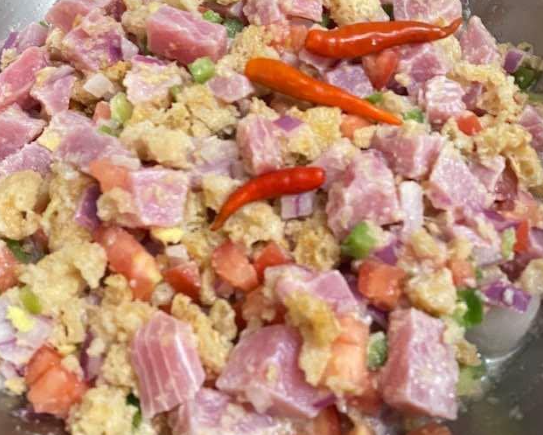
Regional Variations in Filipino Cuisine
The Philippines is an archipelago with over 7,000 islands, leading to a wide variety of regional cuisines. Each region has its own unique dishes and cooking styles, reflecting the local ingredients and cultural influences.
- Luzon: In the northern part of the Philippines, the cuisine is known for its savory and hearty dishes. Examples include Bicol Express, which features pork cooked in coconut milk and chili, and Laing, made with taro leaves simmered in coconut milk.
- Visayas: This region is famous for its seafood dishes, thanks to its proximity to the sea. Kinilaw (raw fish marinated in vinegar and spices) and La Paz Batchoy (a noodle soup with pork offal and crushed pork cracklings) are popular dishes from the Visayas.
- Mindanao: The cuisine in Mindanao is influenced by the Muslim population, leading to the use of spices and ingredients such as turmeric and coconut. Dishes like Chicken Piaparan (chicken cooked with turmeric and coconut milk) and Beef Rendang (spicy beef stew) showcase the bold flavors of this region.
Exploring Filipino Food Culture
Importance of Food in Filipino Culture and Social Gatherings
Food is an integral part of Filipino culture and plays a central role in social gatherings and celebrations. Meals are often a communal affair, with family and friends coming together to share food and enjoy each other’s company. This sense of community and hospitality is deeply ingrained in Filipino society.
Significance of Hospitality and Sharing Meals
Filipinos are known for their warm hospitality, and sharing meals is a way to express this. It is common for guests to be offered food and drink upon arrival, regardless of the time of day. This tradition of sharing food fosters a sense of belonging and strengthens social bonds.
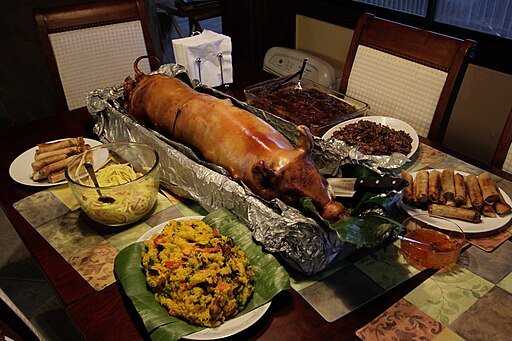
Festivals and Celebrations Centered Around Food
- Fiesta: Fiestas are community celebrations held in honor of patron saints or to mark significant events. These festivities feature a lavish spread of traditional dishes, showcasing the best of Filipino cuisine. Lechon, Adobo, and various desserts are commonly served during fiestas.
- Noche Buena: Celebrated on Christmas Eve, Noche Buena is a grand feast that brings families together to enjoy a special meal. Dishes like Lechon, Hamon (ham), and Queso de Bola (edam cheese) are staples of the Noche Buena table.
- Pista ng Pagkain: Food festivals such as Pista ng Pagkain celebrate regional specialties and culinary diversity. These festivals provide an opportunity for locals and tourists to sample a wide range of Filipino dishes, from savory stews to sweet desserts.
Filipino Delicacies and Street Food
Introduction to Filipino Delicacies and Street Food
Filipino delicacies and street food offer a unique glimpse into the everyday culinary delights enjoyed by locals. These foods are often affordable, flavorful, and readily available, making them a popular choice for snacks and quick meals.
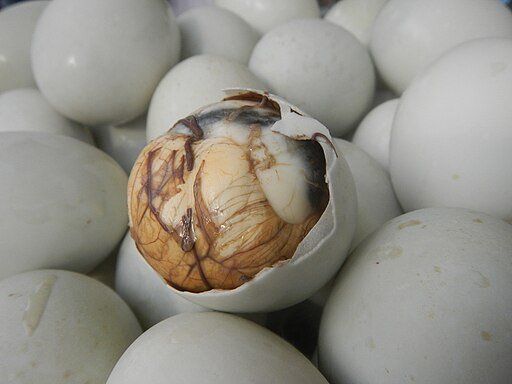
Examples of Popular Delicacies
- Balut: A popular street food, Balut is a boiled fertilized duck egg that is enjoyed as a snack or appetizer. It is considered a delicacy and is often served with salt and vinegar.
- Kakanin: Kakanin refers to a variety of rice-based sweets that are commonly enjoyed as snacks or desserts. Examples include Bibingka (a rice cake traditionally cooked in clay pots) and Puto (steamed rice cakes).
- Halo-Halo: A refreshing dessert, Halo-Halo is a mix of shaved ice, evaporated milk, and various ingredients such as sweetened fruits, beans, and jellies. It is often topped with Leche Flan (caramel custard) and a scoop of ice cream.
Street Food Favorites
- Fish Balls: These skewered fish cakes are a popular street food snack, often served with a variety of dipping sauces, including sweet, spicy, and vinegar-based options.
- Isaw: Grilled chicken or pork intestines, Isaw is a favorite among street food enthusiasts. The intestines are marinated, skewered, and grilled to perfection.
- Taho: A sweet and silky treat, Taho is made from soft tofu, sweet syrup, and tapioca pearls. It is often sold by street vendors in the morning and enjoyed as a breakfast snack.
Filipino Food in Everyday Life
Filipino Breakfast, Lunch, and Dinner Traditions
Meals in the Philippines are typically centered around rice, which is considered the staple food. A typical Filipino breakfast might include dishes like Tapsilog (cured beef with garlic rice and fried egg) or Pandesal (soft bread rolls). Lunch and dinner often feature a combination of meat, seafood, and vegetable dishes, always accompanied by rice.
Common Ingredients in Filipino Cooking
Filipino cooking makes use of a variety of fresh and flavorful ingredients. Common staples include garlic, onions, ginger, soy sauce, vinegar, and fish sauce. Coconut milk, rice, and tropical fruits like mangoes and bananas are also widely used.
Quick and Easy Filipino Recipes for Everyday Meals
- Adobo: This simple and delicious dish is perfect for beginners. Marinate chicken or pork in a mixture of vinegar, soy sauce, garlic, and bay leaves, then simmer until tender.
- Sinigang: A comforting and tangy soup, Sinigang is made by simmering pork or shrimp with tamarind broth and vegetables. Serve with rice for a complete meal.
- Tinola: A ginger-based chicken soup, Tinola is made with green papaya and chili leaves. It is a nourishing dish that is both easy to prepare and full of flavor.
Filipino Food Culture in Restaurants
Rise of Filipino Restaurants Worldwide
In recent years, Filipino cuisine has gained recognition on the global culinary stage. Filipino restaurants are popping up in major cities around the world, introducing international audiences to the diverse flavors of the Philippines.
Showcasing Filipino Culinary Talents on the International Stage
Filipino chefs are making their mark in the culinary world, showcasing their skills and creativity. From traditional dishes to modern interpretations, these chefs are bringing the flavors of the Philippines to a wider audience.
Fusion of Traditional and Modern Filipino Cuisine in Restaurant Menus
Many Filipino restaurants are blending traditional ingredients and cooking techniques with modern culinary trends. This fusion creates innovative dishes that pay homage to the country’s culinary heritage while appealing to contemporary tastes.
Culinary Tourism in the Philippines
Increasing Interest in Culinary Tourism in the Philippines
The Philippines has become a sought-after destination for culinary tourism, attracting food enthusiasts from around the world. Visitors are eager to explore the country’s diverse food culture and savor its unique flavors.
Culinary Destinations and Food Tours Across the Archipelago
Culinary tours offer travelers the chance to explore regional specialties and local ingredients. From the seafood markets of Cebu to the spice farms of Mindanao, these tours provide an immersive culinary experience.
Showcasing the Diverse Flavors and Ingredients of Filipino Cuisine
Culinary tourism highlights the wide range of flavors and ingredients that make Filipino cuisine unique. Visitors can sample everything from traditional dishes and street food to modern fusion creations.
Conclusion
Filipino food culture is a vibrant and integral part of the country’s identity. Its rich and diverse culinary traditions reflect the Philippines’ history and the various cultures that have influenced its development. Whether you’re enjoying a traditional dish at a family gathering, exploring regional flavors, or dining at a modern Filipino restaurant, there’s always something new and exciting to discover. Embrace the opportunity to explore and appreciate the diverse and delicious world of Filipino cuisine, and you’ll gain a deeper understanding of the Philippines’ rich cultural heritage.
Frequently ask questions (Faqs)
What are popular Filipino foods?
Popular Filipino foods include Adobo, Sinigang, Lechon, Kare-Kare, and Pancit. These dishes are staples in Filipino households and are often enjoyed during special occasions and everyday meals alike.
What are your top ten Filipino dishes?
Adobo
Sinigang
Lechon
Kare-Kare
Pancit
Lumpia (Filipino spring rolls)
Halo-Halo
Bicol Express
Chicken Inasal (grilled chicken)
Laing (taro leaves in coconut milk)
What are Filipino main dishes?
Filipino main dishes are typically centered around meat or seafood and are usually served with rice. Examples include Adobo, Sinigang, Kare-Kare, Lechon, and Tinola. These dishes often feature rich and flavorful sauces, hearty ingredients, and a balance of savory, sour, and sweet tastes.
What is the traditional Filipino diet?
The traditional Filipino diet is largely based on rice, which is a staple food and is often consumed at every meal. This diet includes a variety of meats (pork, chicken, beef), seafood, vegetables, and tropical fruits. Cooking methods such as grilling, frying, stewing, and fermenting are commonly used. The traditional diet also emphasizes fresh ingredients and bold flavors, with a balanced combination of sweet, sour, and salty tastes.
You may also like
- https://bestphilippinestravelguide.com/philippines-mythical-creatures/
- https://bestphilippinestravelguide.com/cagayan-de-oro-tourist-spots/
- https://bestphilippinestravelguide.com/filipino-birthday-party-food/
- https://bestphilippinestravelguide.com/budget-ulam-pinoy-secrets/
- https://bestphilippinestravelguide.com/best-lechon-manok/
